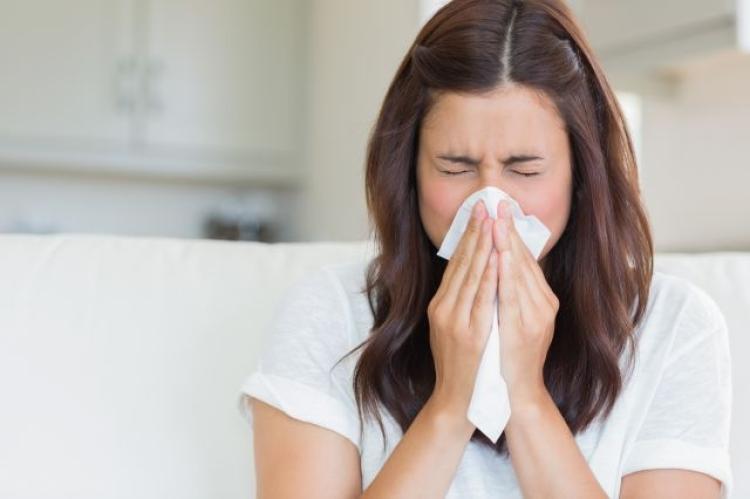Allergies in the Bedroom

Everyone wants to wake up in the morning after a restful night of sleep, feeling refreshed and ready to start their day. Unfortunately for allergy sufferers, this isn’t always the case. The most common triggers for asthma and other bedroom allergies are dust and dust mites. According to WebMD, it is estimated that over 20 million Americans have allergies to dust or dust mites. The dust mites themselves aren’t necessarily the problem, but a protein that’s found in their droppings can cause humans to produce antibodies. Common reactions to dust mite feces may include itching, sneezing, watery eyes, wheezing, and these allergies have even been linked to headaches, fatigue, and depression.
YOUR MATTRESS
One of the most common places for dust mites to harbor is inside of your mattresses. In a mattress, reducing humidity and increasing breathability is key, especially in controlling dust mites. If your mattress or pillow consists of non-breathable synthetic foams, polyester fibers, or down feathers, these can all trap moisture, and dust mites thrive in environments with relative humidity over 50%. It is also important to control the buildup of dead skin cells, which serve as the food source to dust mites.
Coil mattresses are the least favorable for allergy sufferers due to their innerspring design, where dust mites, their droppings, and dead skins cells (their food source) can accumulate. Fluffy pillow tops, with light, loose padding and soft synthetic fibers can also create a breeding ground for those pesky dust mites.
Most of us vacuum our floors on a regular basis, and occasionally vacuum off our sofas and chairs, but when was the last time you vacuumed your mattress? Periodically vacuuming the surface of your mattress can help remove dust mites, their food source, and their allergen-inducing remnants. A leading bagless vacuum manufacturer has even designed a hand-held vacuum just for this purpose — but any vacuum cleaner is capable of the job. Be sure to use the crevice tool to get in all of the deep recesses where dust mites may hide.
Another aggravator while sleeping, though most people don’t even give it a thought, could be the chemicals found in traditional mattresses. Unfortunately, most conventional mattresses use polyurethane foams and polyester fabrics that off gas while you sleep, especially when the mattress is new. As a result of breathing in these off gassing chemicals, some individuals have reported symptoms from headaches to stuffiness.
You can eliminate your exposure to potentially harmful toxins in mattresses by choosing a mattress made of natural materials such as wool, cotton and latex, which is what Sleep Organics specializes in. Not only do these mattresses eliminate those nasty chemicals that could cause respiratory issues, but they also feel great and may be a solution for common mattress complaints of aches and pains.
MATTRESS COVERS AND PROTECTORS
If you’re looking for a more immediate or budget option to help minimize exposure to dust mites, start with waterproof protectors or pads for your mattress and/or pillow. Our Savvy Rest Allergy Encasement is made of organic cotton fabric woven to a pore size of 4.5 microns. The special weave blocks entry of dust mites, pet dander, or bed bugs into your mattress, foundation or box spring. The same protection is available for pillows with our Pillow Allergy Cover. Most of our natural and organic pads and protectors can be easily machine washed and dried, allowing you to keep your mattress and pillow surfaces cleaner and drier, and help reduce the build-up of allergens in your bedding.
START SIMPLE
If you’re not ready to upgrade your mattress or bedding, there are still some simple steps you can take to help minimize dust mite allergens in the bedroom:
– Regularly wash and thoroughly dry sheets, blankets, comforters, and mattress pads.
– Keep the bedroom dry and clean
– Choose hard surface flooring, such as wood or tile. If carpet is a must, choose low-pile carpet or area rugs that can periodically be replaced or cleaned
– Don’t go to sleep with wet hair
– Air out the bedroom periodically
– Run a fan in the summer time to disperse humidity
From small simple steps, to changing out your mattress for a more natural option, there are a number of things you can do to minimize exposure to common bedroom allergens.
If you’re thinking about upgrading your mattress, our sleep specialists are here to help. We feature only the very best, and healthiest, mattress and bedding options and love helping people find solutions to common health problems related to sleep and the sleep environment. Give us a call today 941-312-5906.

